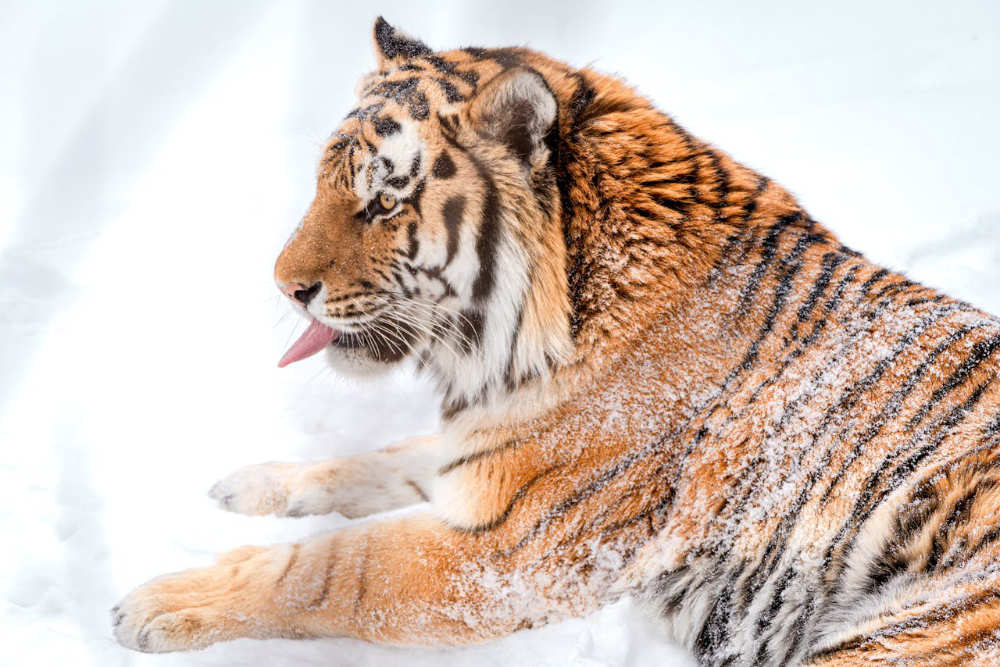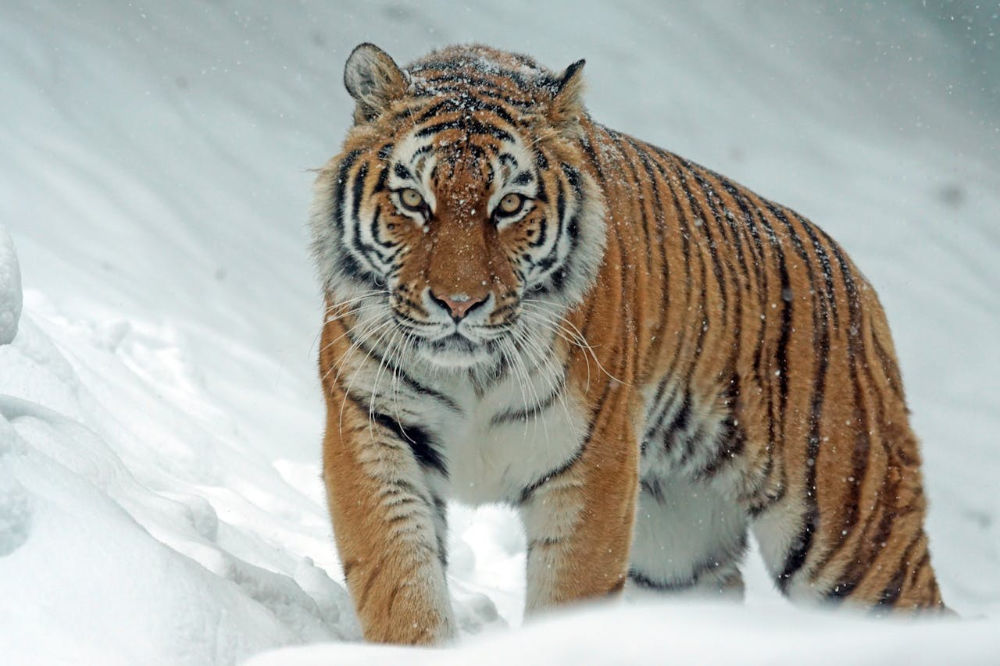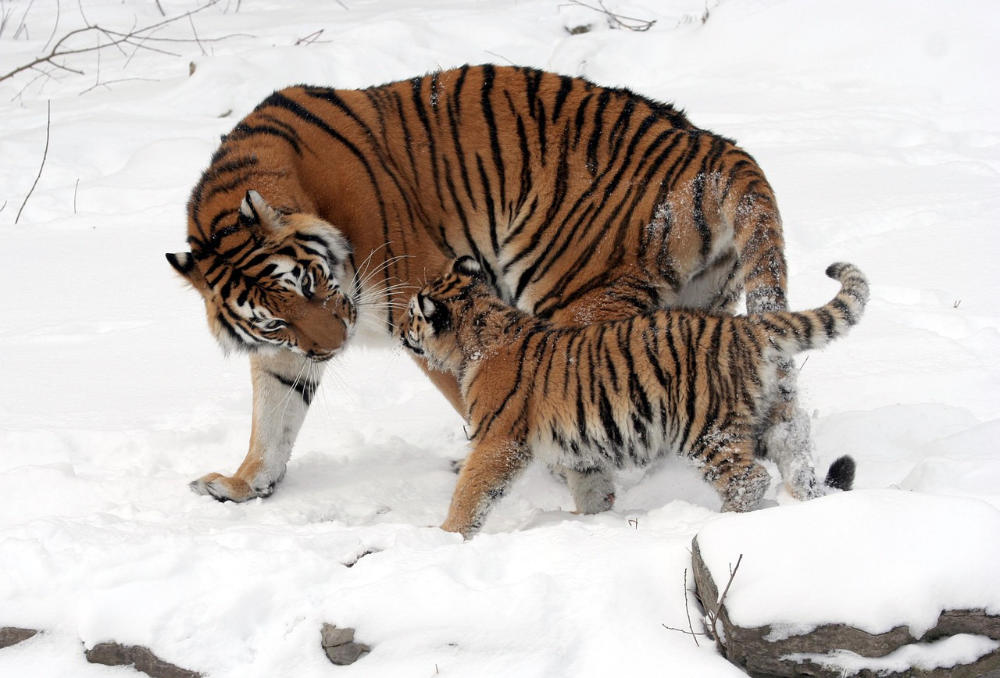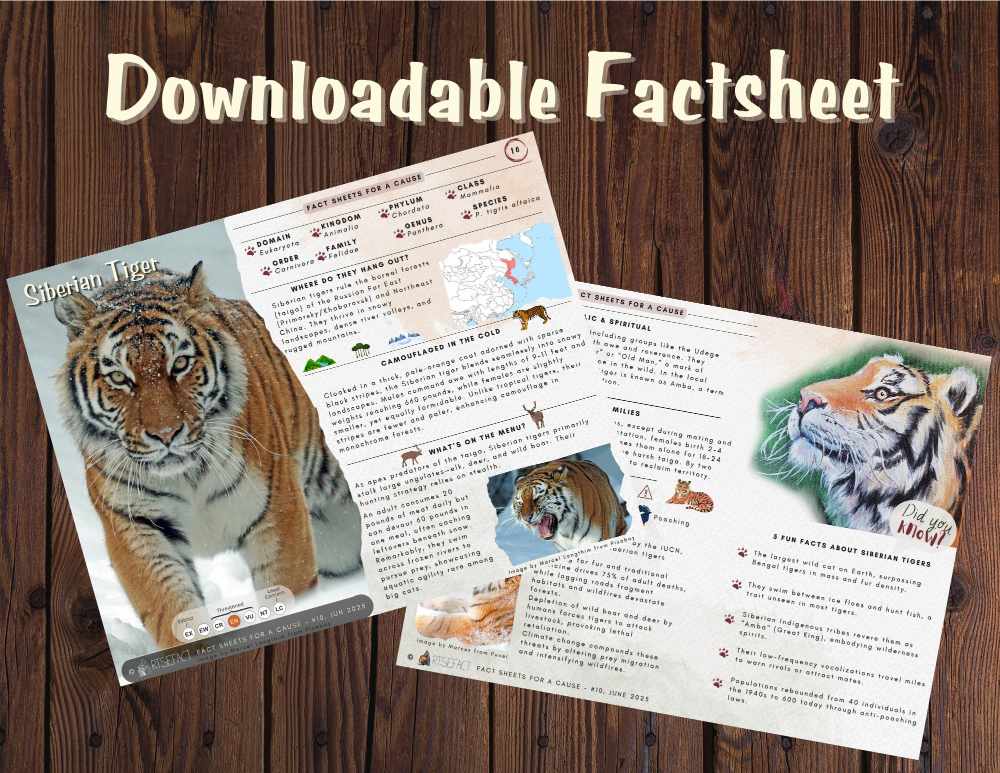
Meet the Siberian Tiger
The Siberian tiger (Panthera tigris altaica), also known as the Amur Tiger, is the largest of all wild cats. It roams the remote forests of Eastern Russia, China, and North Korea, enduring harsh winters with power and grace. The elusive predator plays a key role in keeping ecosystems balanced, yet it remains one of the world’s most endangered big cats.
Scientific Name: Panthera tigris altaica
Phylum: Chordata
Order: Carnivora
Genus: Panthera
Kingdom: Animalia
Class: Mammalia
Family: Felidae
Species: Panthera tigris altaica
IUCN Redlist Status:
According to the IUCN Red List, the Siberian tiger population is estimated at fewer than 600 individuals in the wild. Thanks to strict conservation efforts, its numbers have slightly improved, but the species remains at risk due to habitat fragmentation and poaching.

Camouflaged in the Cold

With a thick, golden-orange coat striped with bold black patterns, the Siberian tiger is built for camouflage in the snowy taiga. Its fur is longer than that of other tigers, and it grows a thick layer of fat to survive sub-zero temperatures.
Siberian tigers can weigh up to 700lbs (318kg) and be over 10 ft (3m) in length, including the tail, making them the largest felines on earth.
Where Do They Roam?

These tigers inhabit the temperate forests of the Russian Far East, particularly the Sikhote-Alin Mountains. A few small populations also exist along the China-Russia border and potentially North Korea.
Their home ranges are vast, sometimes over 770 square miles for males, due to low prey density in these cold environments.
A Stealthy Apex Predator

As solitary hypercarnivores, they primarily hunt elk, wild boar, and deer. A single adult requires 20 lbs (9 kg) of meat daily and can consume 60 lbs (27 kg) in one night. Hunting tactics include ambushing prey with a lethal neck bite and crushing bones with 1,000 PSI jaw strength . Surprisingly, bears comprise 3% of their diet—adult brown bears are rarely attacked, but cubs are vulnerable
It is also a keystone species: by keeping prey populations in check, it maintains the health of its ecosytem.
Symbolic & Spiritual
Among the Tungusic peoples, including groups like the Udege and Nanai, the tiger is seen with awe and reverence. They often refer to it as “Grandfather” or “Old Man,” a mark of respect for its power and presence in the wild. In the local Udege and Nanai languages, the tiger is known as Amba, a term that conveys both fear and admiration.
Family Life in the Snow

Siberian tigers are solitary except during the brief breeding season. After a 93–106 day gestation, a tigress gives birth to 2–4 cubs in a hidden den, raising them alone for 18–24 months. She teaches critical hunting skills—stalking elk and ambushing boar, but only half of cubs survive their first year due to starvation, predators, or human threats like poaching and habitat loss.
5 Astonishing Facts About Siberian Tigers
Here are 5 fun facts about Siberian tigers that you can add to your bag of information:
Record Holders – The largest recorded Siberian tiger weighed over 845 lbs (383kg).
Unique Stripes – Each tiger’s stripe is like a human fingerprint.
Night Vision – Their vision is six times betther than ours in low light.
Snow Sprinters – They can run up to 50 mph (80km/h) in short bursts, even on snow.
Quiet Communicators – Siberian tigers communicate with scent marks, growls, and low-frequency roars that can travel over 3 km.
Threats to their survival
- Illegal Poaching – Their skin and bones are trafficked for traditional medicine and luxury markets
- Habitat Loss – Logging and infrastructure projects continue to fragment their forest homes.
- Prey Decline – Overhunting of deer and boar by humans leaves tigers with fewer food sources.
- Conflict with Humans – Livestock attacks sometimes lead to retaliatory killings.
Fewer than 600 remain in the wild.
Conservation initiatives aim to protect their natural habitats, regulate tourism, and ensure prey availability.
- Protected Areas: Primarily in eastern Russia and northeastern China safeguard critical habitats.
- Anti-Poaching Laws: International bans on the fur trade.
- Community Education: Programs such as the Phoenix Fund’s “Tiger Outreach” help local communities understand and live with the Siberian Tiger.
How You Can Help Save the Siberian Tiger
Support conservation organizations that focus on their protection, such as IUCN Otter Specialist Group or Rainforest Trust.
- Support Wildlife Organizations – Groups like the WWF, Panthera, and the Amur Tiger Center work to protect tigers through research, law enforcement, and community programs.
- Spread awareness – Educate others about the ecological importance of Siberian tigers.
- Shop at Artsefact: Part of the proceeds go towards wildlife and habitat conservation.
Siberian tiger Fact sheet
Would you like a Siberian tiger fact sheet?
- Sign up for our newsletter for exclusive updates and wildlife conservation tips (Your welcome email has your Password for the Portal)
- Visit https://artsefact.com/factsheets/ where you can access and download ALL Factsheets & Gain Early Access to NEW Factsheets

Here’s how you can gain access:
Resources
- The IUCN List of Threatened Species – https://www.iucnredlist.org/species/18711/21938411
- National Geographic – https://www.nationalgeographic.com/animals/mammals/facts/siberian-tiger
- Fact Animal – https://factanimal.com/siberian-tiger/
- World Land Trust – https://www.worldlandtrust.org/?s=siberian+tiger
- Wiley Library – https://onlinelibrary.wiley.com/doi/10.1111/j.1749-4877.2010.00218.x
- Oregon Zoo – https://www.oregonzoo.org/animals/amur-tiger


